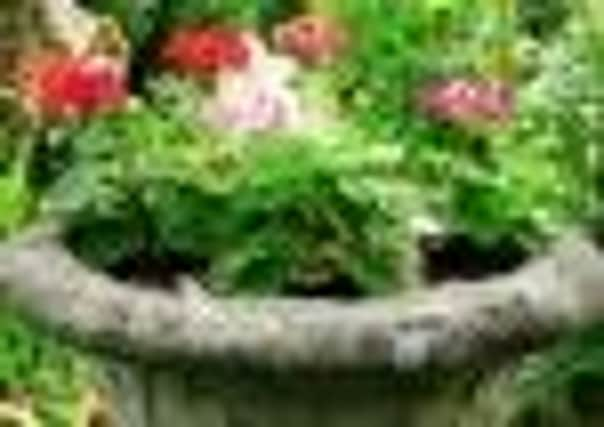Don’t let pride and joy go to pot


Beds and borders should have had their fill, but many container-grown plants still require watering – and feeding – to keep them looking their best.
The only way to find out if they need water is with the finger test – stick a digit into the compost in the pot; if the finger comes out clean, it’s definitely time to water; if it comes out dirty and damp, move on to the next container.
Advertisement
Hide AdAdvertisement
Hide AdIf any are waterlogged, lift them an inch or so off the ground (balance them on those expensive little terracotta “feet” or just use a few bits of old slate) to let excess water drain away.
Correct feeding is another matter altogether. Adding soluble plant food into the watering can every 10 days or so is just right to encourage strong flowering and fruiting. Alternatively, incorporate slow-release fertiliser granules into the compost and forget about any further feeding for several months to come.
But that doesn’t mean you sit down and drink tea for the next few weeks – now comes the job of deadheading. If you leave the old blooms untouched, they will set seed; if you remove them, you’ll be encouraging the plants to produce another flush of flowers.
Hanging baskets and containers that house the likes of fuchsias, pelargoniums, verbena and lobelia, need to be checked regularly and their occupants dead-headed when necessary.
Advertisement
Hide AdAdvertisement
Hide AdAnd while you’re at it, keep an eye on flowering pot plants such as fuchsias, cyclamen, begonias and primulas which are susceptible to black vine weevil which eat through the root system. The result is plants which lose vigour and perform poorly.
If you suspect these pests have invaded your pot plants, inspect the root systems for white horseshoe-shaped grubs with brown heads. If they are there, drench the compost of affected plants with a systemic insecticide like BugClear Ultra Vine Weevil Killer
Greenfly and blackfly are much more easily spotted and can be controlled with any one of several proprietary insecticides which can be used to treat all decorative flowering plants and even some fruit and vegetables – but don’t spray until you’ve read the label. There’s little point destroying the aphids if you’re making the fruit inedible.